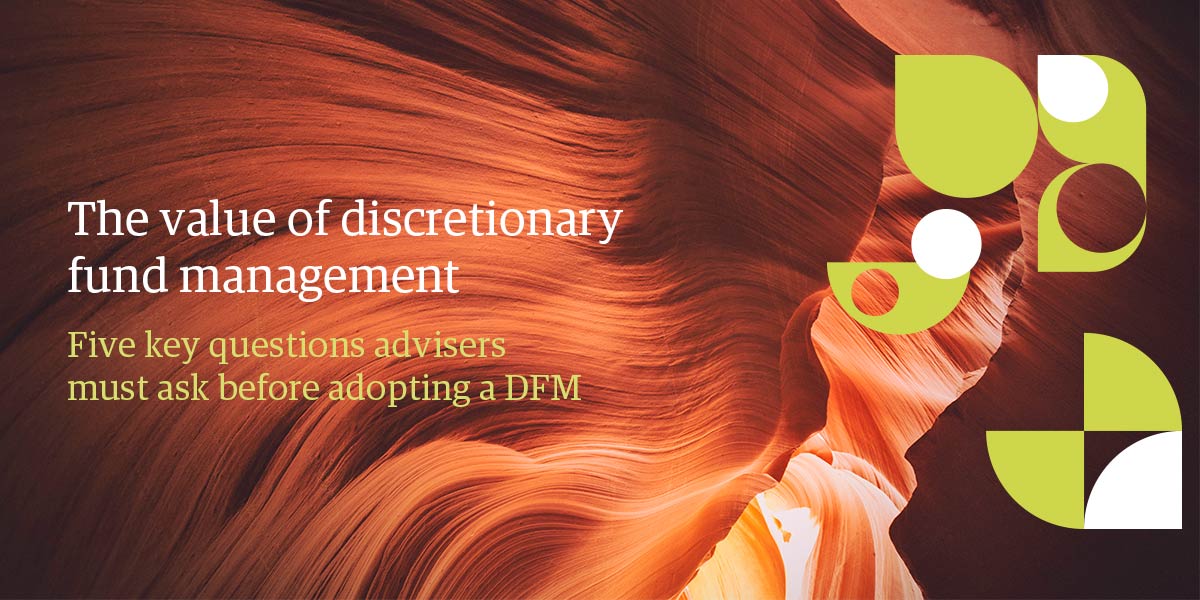If deciding to take on the services of a discretionary fund manager (DFM) is a big decision, then scouting out the most suitable firm to partner with is another kettle of fish altogether for many financial advisers.

Five key questions advisers must ask before adopting a DFM
Judging whether an external manager is the right fit for your business and clients can be a daunting task. For advisers surveyed in the Rathbones’ Value of DFM report the most important factors they said they looked for in a DFM were performance, cost, investment process, track record and personalisation. So, what questions should an adviser ask a third-party external investment manager before letting them loose on client portfolios?
How personalised is your service?
Achieving personalisation for client portfolios is among the main reasons for many advisers transitioning to a DFM, and it should be among the first things an adviser asks about.
For clients demanding a high level of attention to their portfolios, bringing in an external manager with the time and resources to dedicate to them is an obvious solution.
However, one of the big misunderstandings about the level of personalisation offered by a DFM is assuming, as 80% of the advisers surveyed in the report did, that only an individual stocks and shares portfolio constituted a personalised service for clients.
Not all clients will want or need a highly personalised, individual portfolio service, so it is important to consider the whole range of products available. Does the DFM offer model portfolios or a managed portfolio service? For some clients these may be the level of personalisation they need for a time, with the level of bespoke design increasing as their needs develop.
What will the relationship between DFM and adviser look like?
Advisers may find it difficult to hand over control of such a vital part of their business, therefore finding a third-party that fits your ethos is crucial. Do you want a DFM that remains on the fringes? Or are you willing to let them interact directly with clients?
Knowing how a DFM has worked in the past can be a key indication of how well they will fit. Often, advisers choose to act either as an ‘introducer’, where both the adviser and DFM do the risk profiling and client suitability, or decides to hold on to both responsibilities. Perhaps you want a new way of working with a more intermediated position? Make sure the DFM offers the solution you are looking for.
Ultimately, you want the DFM to counteract any concerns you have. The DFM report should allay some fears with almost two-thirds (63%) of advisers surveyed saying the quality of their contact clients had improved since adopting a DFM.
What is your investment process and performance record?
When placing your trust in an DFM and handing over the management of client assets, then obviously portfolio performance will be paramount.
Advisers can face a host of challenges in understanding the investment process of a third-party and whether it matches their business philosophy. On issues such as risk and return, key in the current regulatory environment, an adviser needs to make sure they know which risk-based goals the DFM focuses on, for example.
However, it is important to remember that performance can be a misnomer as it is difficult to compare bespoke portfolios. A blind focus on performance without taking any notice of whether the strategy is active or passive, or what risks are being taken to achieve returns, will not help you, nor your clients in the long-term.
How well is the firm positioned to deal with regulatory issues?
During a time when regulators have their beady eyes trained firmly on the asset management and financial advice space, ensuring the investment manager you take on plays by the rules, and ensures you don’t stray into dodgy territory, is vital.
The need for extra support is a fact accepted by many advisers. Around 64% of advisers that had adopted a DFM structure in the Rathbones’ report admitted they needed the external guidance and regulatory support offered by the external investment manager to meet the challenges of the likes of MiFID II.
While few could argue with the aims of new rules, the layers of demands placed upon both advisers and DFMs are heavy. Asking about how a DFM considers risk and suitability are crucial factors to consider.
How much do you charge?
An important factor is of course the cost of a DFM. No one wants to go back to a client with total charges that have doubled overnight, but crucially advisers should judge the costs of adopting a third-party service while considering the four previous factors, too. You don’t want to pay over the odds for a limited service from an external investment manager, the need to ensure you are paying the right amount for a full range of products and service options is key here.
While the cheapest option may appear the most attractive at first, any adviser needs to make sure the service, from the relationship to regulation, is worth it. That may mean paying slightly more, but that is often the price to pay to secure the added value a quality DFM offers.
Download the first chapter of our DFM research report - The value of discretionary fund management.

